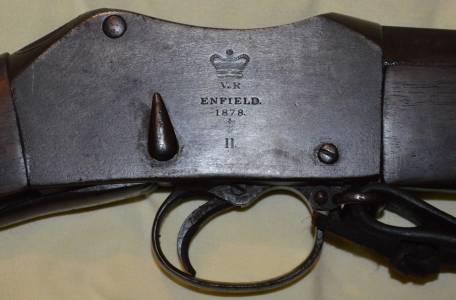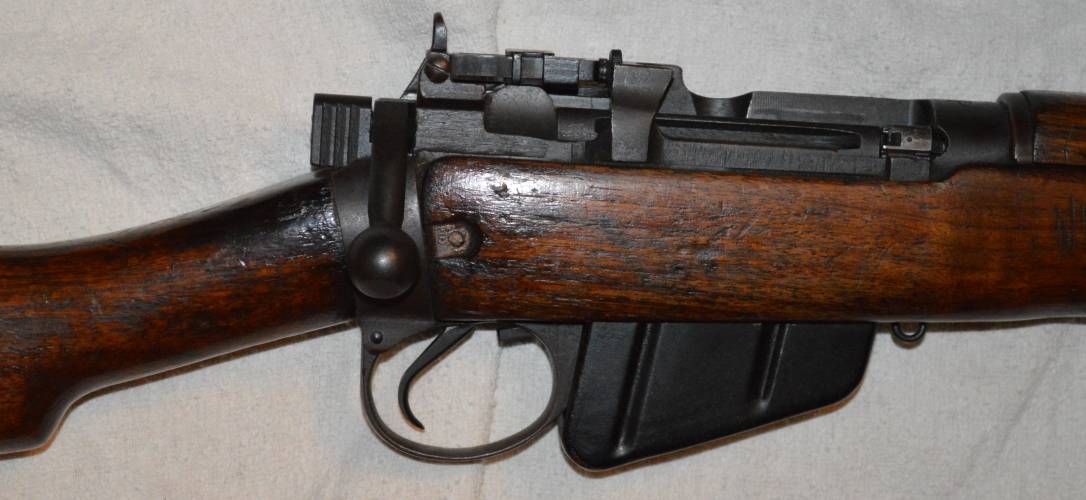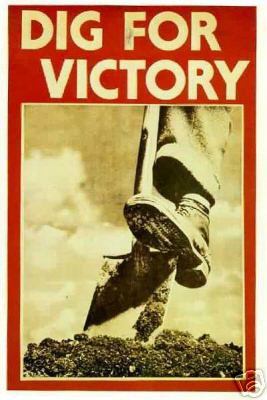Martini-Henry rifle Mk. 11 dated 1878 made by Enfield, the Mk. 11 was the same
rifle that was used in the Zulu war of 1879. |
WWI Flare Pistol. Dated 1916. Made by Webley and Scott LTD. Used for signalling
and to fire parachute flares to illuminate the battlefield at night.
|
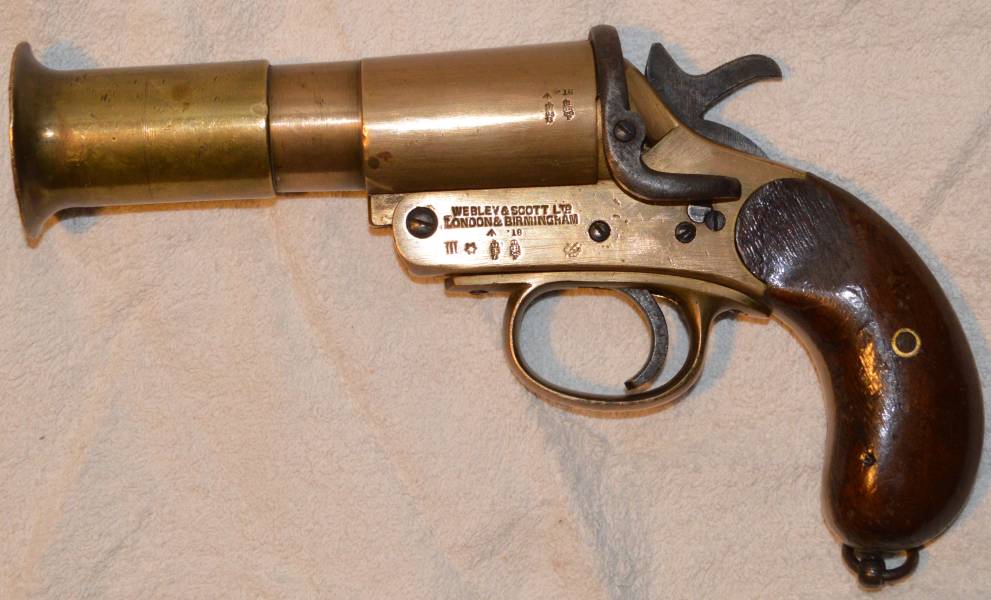 |
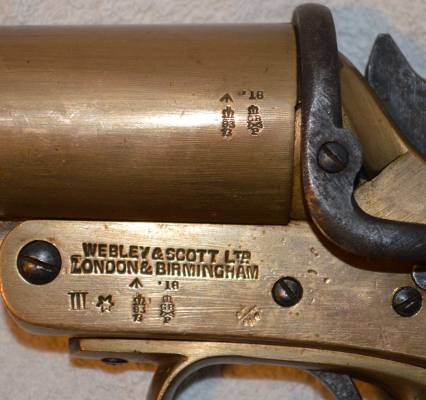 |
 |
303 Pattern 1914 Rifle,(or P14) designed by Enfield it was a British service rifle of WW1. A bolt action weapon with an integral 5-round magazine, due to a shortage of spare industrial capacity the British government turned to the United States to make the P14. It served as a sniper rifle in WW1 and WW11 and used by the Home Guard until being declared obsolete in 1947. When the U.S. Entered WW1 in 1917, the P14 was modified by the U.S. to take the US 30-06 cartridge and became the Model 1917. Sometimes called the M1917 Enfield, this particular rifle is a FAT-BOY" P14 made by Eddystone (ERA)
The Fatboy stock has no finger-grooves, which is correct for an ERA manufactured P14. The Fatboy stock does not have finger grooves because of the wider forend just forward of the action, they have a diagonal relief on the Left side of the fore-end because the wider section obstructed the long range volley sights.
Because of the sturdier Fore-end they were preferred over the Winchester & Renighton made P14s for use with Rifle Grenades
|
 |
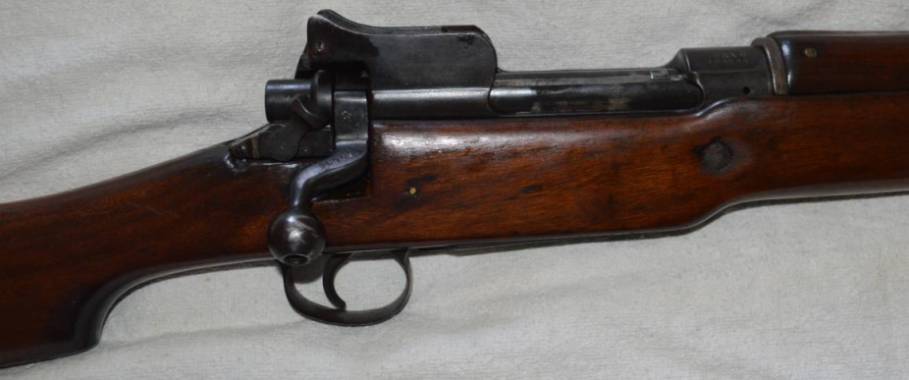 |
Pattern 14 rifle trigger holder + heat sink
Holder and heat sink for trigger bend/curve correction?
I had some trouble identifying the exact use of this tool but thanks to Patrick Chadwick on MILSURPS .COM for the following information which seems the most likely.
I suspect that, if you get hold of an M1917/P14 trigger, you will find that the pivot end with the hardened surfaces fits into the mould-like recess. The trigger tang is left protruding, and could then be heated up sufficiently to be able to adjust the curve, while the holder also functions as a heat sink to prevent the pivot hole and sear-contact surfaces from being softened.
It does indeed look like a "one-off" from a workshop that did a lot of trigger work.
|
 |
I believe this to be a Belgian Lefaucheux Pinfire Revolver or a
French copy? Its in relic condition as it was found buried in the ground, remarkably it still cocks
and fires. If anybody has more information about this Pinfire Revolver please let me know, my E-Mail
is on the home page. |
A Pinfire single barreled shotgun, I can't find any markings or dates on this so if anybody has any
information on this shotgun please let me know. |
The Webley Mk IV .38 Service Revolver in service 1932–1963. Note the war time finish stamped on the side. |
Martini-Henry rifle Mk. IV undated but would be around the late
1880s. Made in Birmingham by Midland Gun Co, a lot of these Including this one were past on to shooting clubs at the end of their service and converted to 22 Caliber, this one was then converted again to a 410 shot gun at some point, during one of these conversions it was cut down in length |
1916 .303 Short Magazine Lee Enfield (SMLE) No.1 Mk.III*, manufactured by Royal Small Arms at Enfield.
|
1942 No. 4 Mk I* Rifle. The No. 4 Mk I was first issued in 1939 but not
officially adopted until 1941 During the course of the Second World War, the No. 4 rifle was further
simplified for mass-production with the creation of the No. 4 Mk I* in 1942, this one was produced
by Long Branch Arsenal in Canada. |
Lee Enfield Rifle Cleaning Kit Includes: Brush, Gauze, Pull Through, Barrel Cleaning Cloth and Brass Oil Bottle. |
MK.1 Bren gun dated 1942 made by Enfield RSAF. |
Bren MKI Small Parts tin.
The parts that would be kept in the Bren small parts tin are as follows
Piston Post Buffer spring
Cut down firing pin [the firing pin has been cut to comply with deact laws.]
Firing pin spring
Extractor
Extractor stay
Extractor stays spring
. 303" Split Case Extractor.
The two brushes shown are the Brush Cleaning Cylinder MK1 and the Brush Cleaning Barrel and would probably not be in the parts tin.
You will also note that there are two Extractor stays in the first picture with slightly different shaped heads, I am assuming one is an earlier version of the other? |
BREN, Tool Fouling, Mk1. Dated 1954. Used to clean out Carbon fouling out of the gas expansion cylinder.
Also reamer keys, For cleaning the gas ports of the Bren gun, both of these tools were carried in the gunners wallet. |
MK.11 Sten Gun. The Sten name comes from the names of the designers (R. V. Shepard
and H. J. Turpin) and from the factory where they worked (Enfield arsenal). The Mk.11 sten gun was the most widely made
variant in the entire Sten series, with about 2 million of them being made during the war. Also shown are the cleaning
rod and magazine loader. |
MK.11 Sten gun magazine loader undated. |
| 

